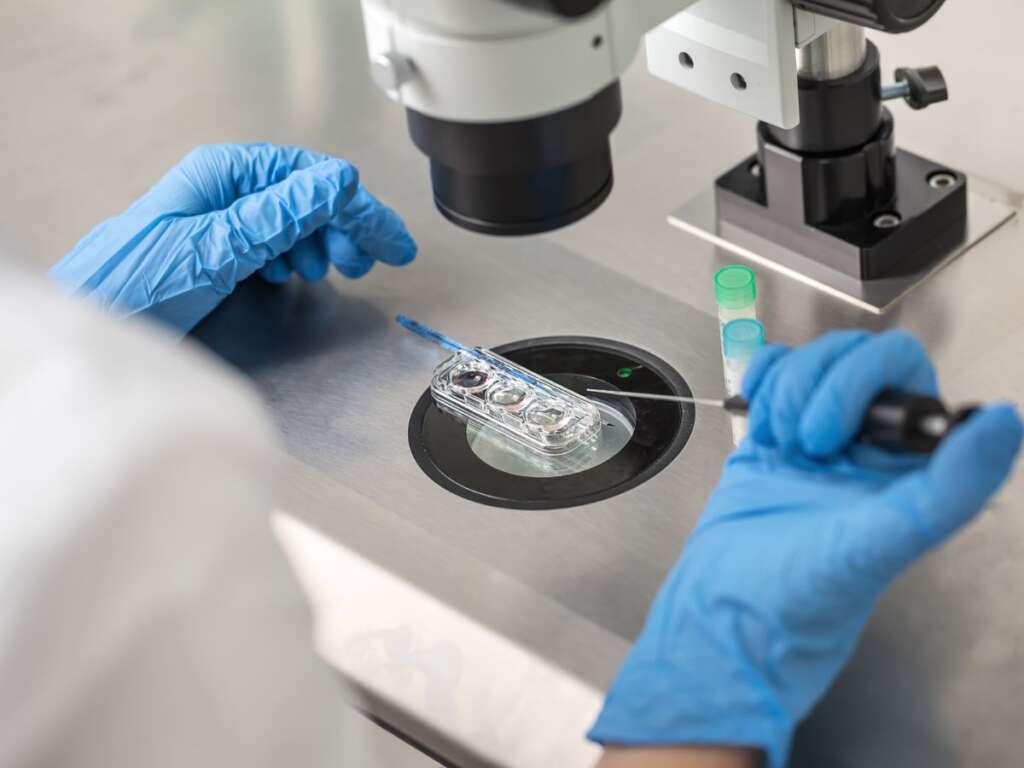Biomarkers For Predicting Preterm Birth: State Of The Science


The journey through pregnancy, brimming with excitement and anticipation, also presents unforeseen hurdles, with preterm birth emerging as a significant concern. Defined as delivery before 37 weeks of gestation, preterm birth poses grave health risks for both the infant and the mother. In recent years, the scientific community has delved into the realm of biomarkers as a means to forecast preterm birth, aiming to usher in early interventions and personalized care. This article delves into the current landscape of biomarker research for predicting preterm birth, highlighting promising advancements that offer a ray of hope for a healthier start to life.
Pregnancy is a complex journey, and the early detection of preterm birth can significantly improve outcomes for both mothers and infants. Biomarkers, biological indicators that reveal insights into various maternal and fetal health aspects, are pivotal in identifying individuals at risk. These biomarkers span a spectrum, from inflammatory markers like C-reactive protein (CRP) and interleukin-6 (IL-6) to hormonal indicators such as fetal fibronectin and cervical length. By assessing these biomarkers, healthcare providers can gauge the risk of preterm birth and tailor interventions accordingly.
Advancements in genomics have provided deeper insights into the genetic factors underlying preterm birth. Genetic biomarkers, identified through genome-wide association studies (GWAS), offer personalized risk assessments, enabling targeted interventions based on an individual’s unique genetic makeup. Additionally, epigenetic influences, such as DNA methylation and histone acetylation, play a crucial role in regulating gene expression during pregnancy. Examining epigenetic biomarkers helps identify high-risk pregnancies and understand the interplay between genetic predispositions and environmental factors.
Maternal serum serves as a rich source of biomarkers, offering a non-invasive avenue for predicting preterm birth. Proteomic markers, including proteins like insulin-like growth factor-binding protein 1 (IGFBP-1) and alpha-fetoprotein (AFP), undergo altered levels during preterm labor. Monitoring these protein biomarkers facilitates early detection and intervention, thus improving maternal and fetal outcomes. Advanced mass spectrometry techniques enhance the sensitivity and specificity of detecting these proteomic biomarkers, providing a comprehensive understanding of biochemical changes associated with preterm birth.
Imaging modalities play a crucial role in assessing anatomical and physiological changes during pregnancy. Transvaginal ultrasound, with its high resolution, enables the measurement of cervical length, a key indicator of preterm birth risk. Magnetic Resonance Imaging (MRI) offers detailed images of the uterine environment, aiding in the assessment of factors like placental morphology and blood flow. Integrating imaging modalities with biomarkers enhances the accuracy of preterm birth predictions, offering a more comprehensive diagnostic approach.
The microbiome, comprising microorganisms in the human body, has emerged as a novel area of research in understanding preterm birth. Variations in the vaginal and gut microbiota serve as biomarkers, offering insights into the complex balance influencing pregnancy outcomes. Monitoring microbial diversity aids in identifying individuals at risk and enables interventions to maintain a healthy microbial balance, thus reducing the likelihood of preterm birth.
Despite promising strides in biomarker research, challenges persist. Standardizing assays, addressing reproducibility issues, and integrating multiomic approaches are essential for advancing the field. Future directions involve harnessing artificial intelligence for data analysis, facilitating precision medicine, and exploring novel biomarkers for a more nuanced predictive model.
In conclusion, biomarkers for predicting preterm birth signify the relentless pursuit of knowledge for the well-being of mothers and their newborns. Despite challenges, the state of the science in biomarkers offers immense promise. Through continued research, standardization, and technological innovations, we move closer to a future where personalized, preventive strategies ensure a healthier beginning for every newborn.
The journey through pregnancy, while often filled with joy and anticipation, is not without its challenges. One of the most significant concerns that can arise is preterm birth, which occurs when a baby is born before 37 weeks of gestation. This premature delivery can bring about serious health risks for both the newborn and the mother. However, recent advancements in scientific research have shed light on the potential of biomarkers to predict preterm birth, offering hope for early interventions and improved outcomes. In this comprehensive exploration, we delve into the latest developments in biomarker research and their implications for prenatal care.
To understand the significance of biomarkers in predicting preterm birth, it’s crucial to grasp the complexity of this phenomenon. Preterm birth is not a singular condition but rather a multifactorial event influenced by various biological and environmental factors. Biomarkers, which are measurable indicators of biological processes, offer valuable insights into these factors, allowing healthcare providers to identify individuals at risk and intervene proactively.
Inflammatory biomarkers, such as C-reactive protein (CRP) and interleukin-6 (IL-6), are among the key indicators associated with preterm birth. Elevated levels of these markers may signify an inflammatory response in the body, which can be a precursor to premature labor. By monitoring these biomarkers, healthcare providers can identify individuals who may be at higher risk of preterm birth and take appropriate measures to mitigate this risk.
Hormonal biomarkers also play a significant role in predicting preterm birth. Disruptions in progesterone and estrogen levels, for example, have been linked to premature labor. Biomarkers like fetal fibronectin, which is a protein found in the fetal membranes, and cervical length can provide valuable information about hormonal imbalances and help predict the likelihood of preterm birth.
Advancements in genomics have further expanded our understanding of preterm birth by uncovering genetic biomarkers associated with this condition. Genome-wide association studies (GWAS) have identified specific genetic variations that may predispose individuals to preterm labor. By analyzing an individual’s genetic makeup, healthcare providers can assess their risk of preterm birth and tailor interventions accordingly, paving the way for more personalized care strategies.
Epigenetic influences, which refer to changes in gene expression that are not caused by alterations in the DNA sequence itself, also play a critical role in preterm birth. Factors such as DNA methylation and histone modifications can affect gene expression patterns during pregnancy and influence the risk of premature labor. By examining epigenetic biomarkers, researchers can gain a deeper understanding of the mechanisms underlying preterm birth and identify new targets for intervention.
In addition to genetic and hormonal biomarkers, proteomic markers found in maternal serum have emerged as promising predictors of preterm birth. Proteins such as insulin-like growth factor-binding protein 1 (IGFBP-1) and alpha-fetoprotein (AFP) exhibit altered levels in the blood during preterm labor, offering valuable insights into the physiological changes occurring in the body. Advanced mass spectrometry techniques have enhanced our ability to detect these proteomic biomarkers with greater precision, further improving the accuracy of preterm birth prediction.
Imaging modalities, such as transvaginal ultrasound and magnetic resonance imaging (MRI), also play a crucial role in predicting preterm birth by allowing healthcare providers to assess anatomical and physiological changes in the body. Transvaginal ultrasound, for example, can be used to measure cervical length, which is a key indicator of preterm birth risk. MRI, on the other hand, provides detailed images of the uterine environment, allowing for the assessment of factors such as placental morphology and blood flow. By integrating imaging modalities with biomarkers, healthcare providers can obtain a more comprehensive understanding of the factors contributing to preterm birth and develop more effective intervention strategies.
The microbiome, which refers to the community of microorganisms that inhabit the human body, has recently emerged as a novel area of research in predicting preterm birth. Variations in the vaginal and gut microbiota have been linked to preterm labor, with certain microbial profiles associated with an increased risk of premature delivery. By monitoring the composition of the microbiome, researchers hope to identify biomarkers that can be used to predict preterm birth and develop targeted interventions to reduce this risk.
Despite the promising advancements in biomarker research, several challenges remain. Standardizing biomarker assays, addressing reproducibility issues, and integrating multiomic approaches are essential for advancing the field and translating research findings into clinical practice. Additionally, further research is needed to explore novel biomarkers and refine existing predictive models to improve their accuracy and reliability.
In conclusion, biomarkers offer a promising avenue for predicting preterm birth and improving outcomes for both mothers and newborns. By providing valuable insights into the biological processes underlying preterm labor, biomarkers enable healthcare providers to identify individuals at risk and intervene proactively to prevent premature delivery. Through continued research and innovation, we can further enhance our ability to predict preterm birth and ensure a healthier start to life for all newborns.



